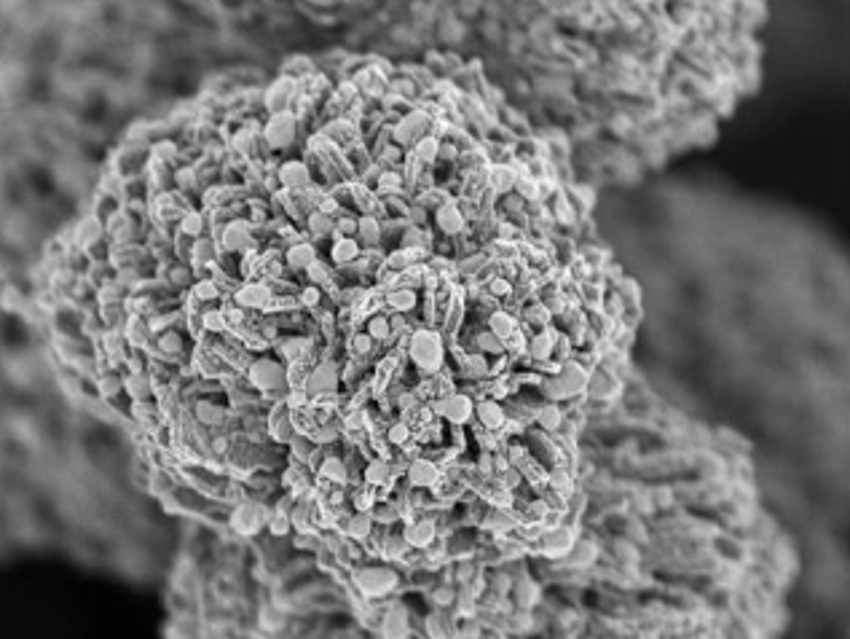Hierarchically assembled metallic nanostructures can have useful catalytic and photochemical properties (such as surface-enhanced Raman scattering or SERS). Such nanostructures are generally constructed by reducing metal ions in solution. In contrast, the solid-state synthesis of such nanostructures remains challenging.
Ryosuke Miyake, Ochanomizu University, Tokyo, and JST-PRESTO, Kawaguchi, Japan, have synthesized silver-containing nanostructures in the solid state by using peptides as both a template and a reductant for Ag(I). By heating a crystalline Ag(I) dipeptide complex, Ag nanoparticles with an ordered structure (pictured) were formed through a stepwise reduction by the carboxylic groups. Small nanoparticles with diameters of ca. 10 nm were selectively formed on the crystalline surface.
The crystalline morphology varies with the type of peptide, whereas the size of the nanoparticles can be varied by controlling the heating process. This work provides a new approach to constructing hierarchically assembled Ag nanostructures.
- Preparation of Hierarchically Assembled Silver Nanostructures based on the Morphologies of Crystalline Peptide-Silver(I) Complexes,
Ryosuke Miyake, Yukari Nitanai, Yuki Nakagawa, Junfei Xing, Koji Harano, Eiichi Nakamura, Jun Okabayashi, Takeo Minamikawa, Keirei Uruma, Katsuhiko Kanaizuka, Masato Kurihara,
ChemPlusChem 2019, 84, 295–301.
https://doi.org/10.1002/cplu.201800666




